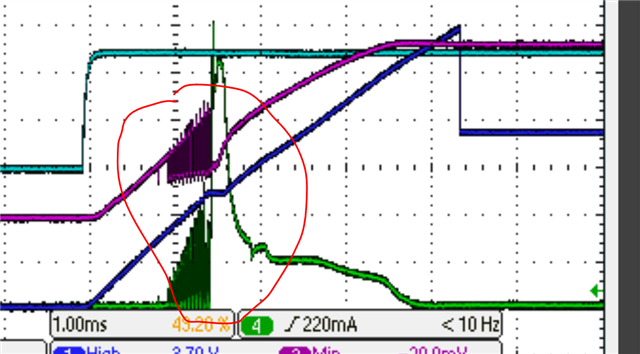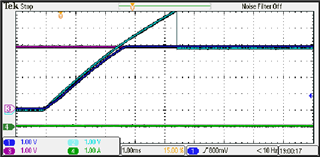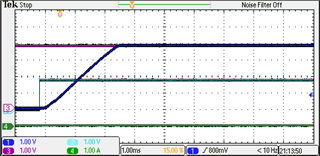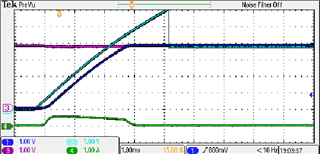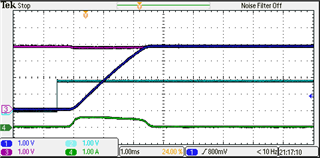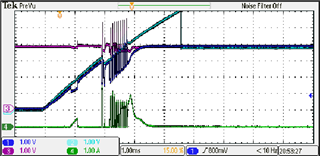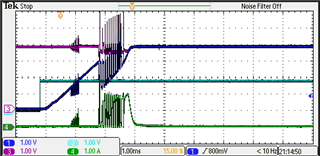Other Parts Discussed in Thread: TPS63811
We are using the TPS25974L in the circuit shown below:
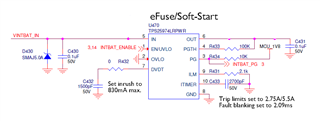
The output of the eFuse is connected to circuitry that includes 380uF of capacitance.
When the eFuse is enabled we see a current spike that looks excessive:
Dark blue = ITIMER pin 10, light blue = dv/dt pin 7, purple = output voltage pin 6, green = input current
The current spikes to approx 3A for a short time. My understanding is the eFuse should hold the current to under 830mA with these component values.
Is this correct operation?


